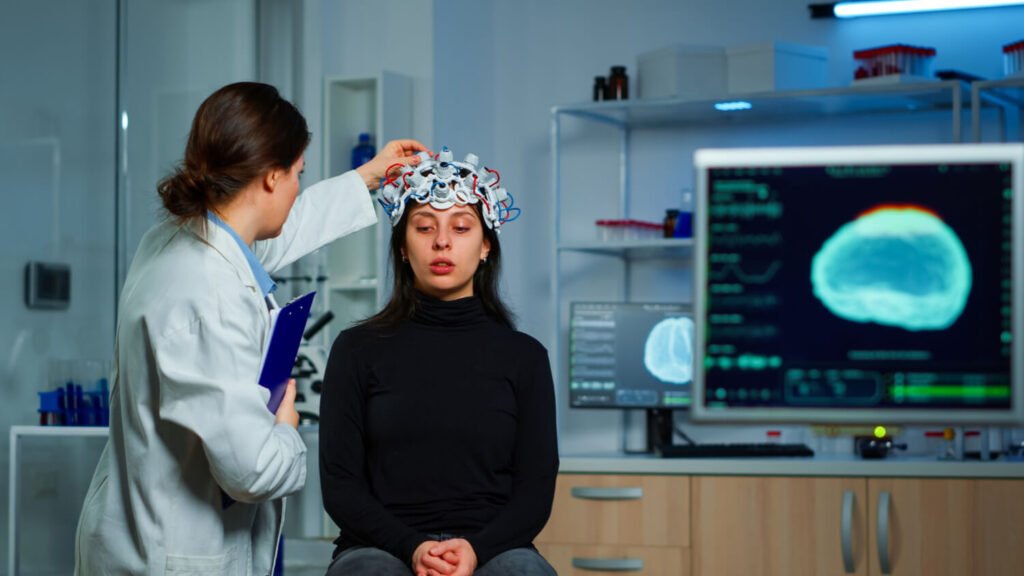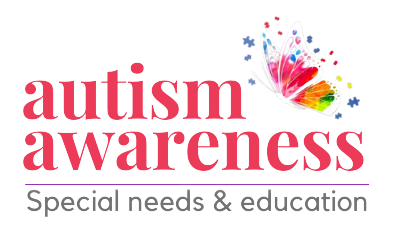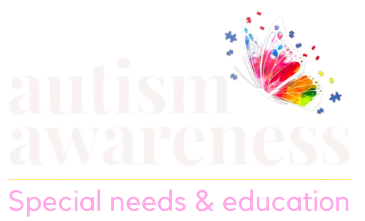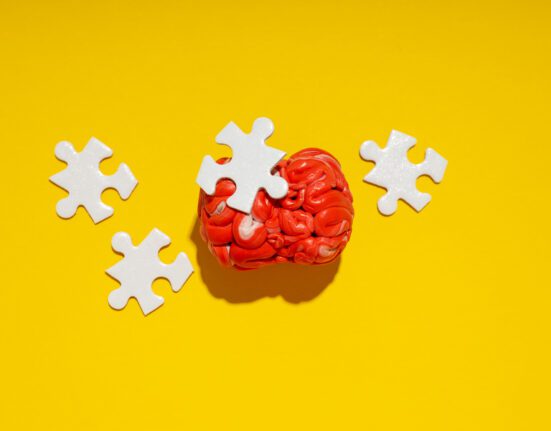Attention Deficit Hyperactivity Disorder (ADHD) presents individuals of varying ages with a variety of issues that are specific to them. Among the conventional therapies for attention-deficit/hyperactivity disorder (ADHD), the rise of Brain Fitness Programs represents a revolutionary approach to the management of ADHD symptoms. The purpose of this in-depth investigation is to provide light on the design, principles, and potential impact that these programs may have on cognitive development by delving into the essential components that form the foundation of these programs.
In This Article
ToggleUnderstanding Brain Fitness Programs for ADHD
Brain fitness programs make use of the notion of neuroplasticity, which refers to the extraordinary capacity of the brain to remodel itself in response to events. Through the use of specific exercises, activities, and interventions, these programs have been designed to improve cognitive functions. Although it was initially designed for the purpose of improving general cognitive abilities, their adaption for attention-deficit/hyperactivity disorder (ADHD) represents a viable route for tackling the unique obstacles associated with the disorder.
Key Components
1. Cognitive Training

Objective: Enhance attention, memory, and executive functions.
Activities
- Memory Games: Memory games are designed to entertain and test the brain’s capacity to recall and remember information. Memory games are also known as “memory games.” When participating in these activities, individuals are frequently exposed to stimuli for a short amount of time. These stimuli may include images, numbers, or patterns. After that, users are faced with accurately recreating the stimuli and remembering them, respectively. As a result of the thought-provoking nature of these games, different regions of the brain that are linked with memory are stimulated. This encourages participants to train their short-term and long-term memory capacities.
Example: In the game of Matching Pairs, each participant is given a set of cards that are turned over and face down. Each card has a picture. It is necessary for them to flip the cards, two at a time, in order to locate similar pairs.
- Memory Games: Memory games are designed to entertain and test the brain’s capacity to recall and remember information. Memory games are also known as “memory games.” When participating in these activities, individuals are frequently exposed to stimuli for a short amount of time. These stimuli may include images, numbers, or patterns. After that, users are faced with accurately recreating the stimuli and remembering them, respectively. As a result of the thought-provoking nature of these games, different regions of the brain that are linked with memory are stimulated. This encourages participants to train their short-term and long-term memory capacities.
- Attention-Building Tasks: Attention-building tasks are actions that are designed to improve an individual’s capacity to maintain focus over a period of time. These tasks frequently involve activities that require participants to pay undivided attention to a particular stimulus or task. As a result, participants are required to avoid distractions and maintain their concentration on the designated activity. To improve the duration and quality of attention, which is essential for activities that demand continuous concentration, the goal is to develop attention skills.
Example of a Task That Will Build Attention: In the Digit Span Test, participants are given a series of numbers and asked to repeat them in the precise order that they were presented. This test is designed to evaluate both the participants’ short-term memory and their attention span.
- Attention-Building Tasks: Attention-building tasks are actions that are designed to improve an individual’s capacity to maintain focus over a period of time. These tasks frequently involve activities that require participants to pay undivided attention to a particular stimulus or task. As a result, participants are required to avoid distractions and maintain their concentration on the designated activity. To improve the duration and quality of attention, which is essential for activities that demand continuous concentration, the goal is to develop attention skills.
- Problem-Solving Activities: By posing challenges to participants that call for analytical reasoning and strategic thinking, problem-solving exercises are designed to encourage critical thinking abilities from those who participate. Participants are required to come up with solutions to the puzzles, riddles, or difficult scenarios that are presented to them throughout these exercises. This helps to cultivate cognitive flexibility and the capacity to think analytically.
Example: Crossword Puzzles – Participants in crossword puzzles are required to fill in a grid depending on the clues that are presented to them. In order to complete the challenge, they must rely upon their vocabulary and their ability to recognize patterns.
- Problem-Solving Activities: By posing challenges to participants that call for analytical reasoning and strategic thinking, problem-solving exercises are designed to encourage critical thinking abilities from those who participate. Participants are required to come up with solutions to the puzzles, riddles, or difficult scenarios that are presented to them throughout these exercises. This helps to cultivate cognitive flexibility and the capacity to think analytically.
2. Neurofeedback

Brain Fitness Programs include a therapy approach called neurofeedback, which is also known as electroencephalography (EEG) biofeedback. The purpose of this technique is to regulate brain activity and improve the ability to self-regulate. Providing individuals with the ability to achieve better control over their cognitive processes, which will ultimately lead to improvements in focus, attention, and emotional regulation, is the major objective.
Activities: Real-Time Monitoring and Immediate Feedback
Real-Time Monitoring of Brainwaves
- Individuals are required to wear EEG sensors during neurofeedback sessions in order to monitor the electrical activity that occurs within their brains.
- The exact brainwave patterns that are associated with various mental states, such as focus, relaxation, or hyperactivity, are recorded by these sensors.
- Real-time monitoring offers a dynamic snapshot of the individual’s present brain activity from the perspective of the monitoring system.
Immediate Feedback Mechanism
- The patterns of brainwaves that have been captured are provided with feedback in real time, either visually or aurally.
- When a user’s brainwave activity is detected, they may hear tones or see changes in the images that appear on the screen.
- For instance, a state of mind that is tranquil may result in a visual display that is soothing or have tones that are harmonic, but a state of mind that is distracted may cause changes in the feedback.
Learning Self-Regulation Skills Over Time
- By participating in neurofeedback sessions on a regular basis, individuals gradually acquire the ability to correlate particular mental states with the feedback cues that correspond to those sessions.
- As a training technique, the rapid feedback serves to reinforce positive mental states and encourage individuals to self-regulate in order to achieve the outcomes that they seek.
- Users eventually gain the skills necessary to actively alter their brain activity and develop a heightened awareness of their own mental moods as time goes on.
Benefits of Neurofeedback in Brain Fitness Programs
- Self-Awareness: Users better understand their cognitive states and notice focus, relaxation, and distraction tendencies.
- Self-Regulation: Real-time feedback allows people to change immediately, improving self-regulation.
- Customized Interventions: ADHD symptoms can be treated with neurofeedback techniques.
- Long-Term Cognitive Changes: Neurofeedback sessions change brainwave patterns, which may increase attention and emotional stability.
When neurofeedback is combined with real-time monitoring and fast feedback, it transforms into a potent tool that can be utilized within Brain Fitness Programs. This tool contributes to the overarching goal of improving self-regulation abilities and maximizing cognitive function over the course of time.
3. Physical Exercise

Objective: Incorporate regular physical exercise to stimulate overall brain health and neurotransmitter production.
Incorporating physical activity into brain fitness programs is done with the primary intention of fostering the overall health of the brain. This mission seeks to maximize the overall functioning of the brain, taking into consideration the complex relationship that exists between physical activity and cognitive well-being. In addition, it intends to stimulate the creation of neurotransmitters, which are chemical messengers that play an essential role in the regulation of mood, attention, and impulse control, all of which are generally affected by attention-deficit/hyperactivity disorder (ADHD).
The Power of Aerobic Exercises Is Presented Through Crafting Activities
Incorporating aerobic workouts into your routine can help minimize the symptoms of attention-deficit/hyperactivity disorder (ADHD) and improve cognitive skills.
It has been decided that the introduction of aerobic activities will serve as the medium for accomplishing these goals. There is a well-established fact that these continuous, rhythmic movements have a significant influence on cognitive functions. The reasoning for this is based on the fact that aerobic activities have a beneficial effect on blood flow to the brain, which guarantees a consistent supply of oxygen and nutrients that are necessary for healthy functioning.
Running, cycling, swimming, and brisk walking are all examples of aerobic exercises. Other examples include cross-training and resistance training. As a result of this conscious selection, aerobic activities have been shown to be useful in enhancing executive skills, attention, and memory, which are critical areas that are frequently compromised in individuals who have attention-deficit/hyperactivity disorder (ADHD).
Holistic symptom management
bridging the gap between the two It is very evident that the goal of including aerobic activities into Brain Fitness Programs is to directly address the symptoms of attention-deficit/hyperactivity disorder (ADHD). Participation in these activities on a regular basis is intended to alleviate difficulties associated with attention deficits and hyperactivity, providing a natural and holistic approach to the management of attention-deficit/hyperactivity disorder (ADHD).
Holistic well-being is the symbiotic relationship between one’s physical and mental health.
This is a conscious effort to foster both the overall health of the brain as well as the generation of neurotransmitters that are essential for cognitive equilibrium. In conclusion, the strategic integration of regular physical exercise, particularly aerobic activities, into Brain Fitness Programs is a deliberate move. Within the field of Brain Fitness Programs, this all-encompassing approach recognizes the mutually beneficial relationship that exists between physical health and cognitive well-being. As a result, it provides individuals who have Attention Deficit Hyperactivity Disorder (ADHD) with a powerful method for the management of their symptom
3. Mindfulness and Meditation

Objectives
Enhancing Attention: To improve one’s capacity to maintain focus and concentration, one must first improve one’s ability to enhance one’s attention. An individual with attention-deficit/hyperactivity disorder (ADHD) frequently faces difficulties in keeping attention for extended periods of time, and this target tries to address those difficulties.
Reducing Impulsivity: Focusing on moderating impulsive behaviors, which are characterized by rapid actions without complete thought of consequences, is the primary goal of reducing impulsivity. With the help of this objective, we hope to inculcate a sense of self-control and thoughtful decision-making.
Promoting Emotional Regulation: Fostering the Capacity to Manage and control Emotions Properly Fostering the ability to successfully manage and control emotions is an essential component of promoting emotional regulation. The goal of this purpose is to build a balanced and controlled emotional state in individuals who have attention-deficit/hyperactivity disorder (ADHD), who may have altered emotional responses.
Activities
Guided Mindfulness Sessions: Guided mindfulness sessions consist of structured activities that are overseen by an instructor or through the use of audio guides. In order to cultivate a more heightened state of mindfulness, participants are instructed to devote their attention to certain thoughts, feelings, or breath. This helps to build a heightened awareness of the current moment, which in turn reduces mental distractions and improves focus.
Objectives The curriculum includes a variety of meditation activities, including loving-kindness meditation and concentrated meditation, among others. Through the application of these practices, individuals are encouraged to participate in a period of introspection and self-reflection, which ultimately results in a state of mind that is quiet and focused. By fostering careful and intentional mental processes, meditation also helps to reduce impulsivity, which is another significant benefit of this practice.
Emotional Well Being Activities: Mental and Emotional Health Exercises that help participants recognize, comprehend, and be in control of their feelings are included in the activities that are designed to promote emotional well-being. Journaling, exercises in reflection, or interactive sessions are some examples of these types of activities that offer assistance to individuals in navigating and regulating their emotional responses. The development of emotional intelligence is one of the ways in which these activities contribute to the increase of emotional regulation.
Holistic Approach: The integration of guided mindfulness and meditation practices is intended to produce a holistic approach to treating the interconnected aspects of attention, impulsivity, and emotional regulation. This technique is supposed to establish a holistic approach. The issues that are connected with attention-deficit/hyperactivity disorder (ADHD) can be effectively managed by individuals through the utilization of certain activities, which not only target specific cognitive functions but also contribute to general well-being.
In conclusion, the goal of Brain Fitness Programs is to meet the objectives of boosting attention, lowering impulsivity, and promoting emotional control through the utilization of various exercises that have been carefully curated. In order to build a complete strategy that helps individuals with attention-deficit/hyperactivity disorder (ADHD) cultivate focused awareness and emotional equilibrium, guided mindfulness sessions, meditation practices, and emotional well-being activities work together in a synergistic manner.
Evidence from scientific research and findings from studies

When it comes to the acceptance and implementation of Brain Fitness Programs for Attention Deficit/Hyperactivity Disorder (ADHD), scientific proof is absolutely necessary. The effectiveness of these treatments has been evaluated in a great number of studies, including meta-analyses and research articles. Consistently, the findings indicate that there is a positive impact on cognitive processes and that the effectiveness of the management of ADHD symptoms is demonstrated. Thorough research lays a solid foundation for the incorporation of these programs into the mainstream therapies for attention-deficit the hyperactivity disorder (ADHD).
Personalized Approach: Customizing Brain Fitness Programs for ADHD to Meet Unique Needs

In the process of developing and implementing Brain Fitness Programs, it is of the utmost importance to take into account the individuality of each person who has Attention Deficit Hyperactivity Disorder (ADHD). The process of personalization entails taking into consideration a variety of characteristics, including age, the severity of symptoms, and individual learning styles. This guarantees that the treatments are not only successful but also engaging, relevant, and capable of producing the best possible results for each individual participant.
Challenges and Considerations
Brain fitness programs for attention-deficit/hyperactivity disorder (ADHD) have problems that require careful evaluation, despite the fact that they hold a great deal of promise:
Limited Regulations
Challenges: In the absence of defined rules and governmental control, there are problems that must be overcome in order to guarantee the quality and effectiveness of the programs that are now offered.
Consideration: Take into consideration that in order to improve the credibility of Brain Fitness Programs, it is vital to advocate for regulations that are more transparent and standards that are founded on facts.
Availability and Cost-Effectiveness
Challenge: The availability of these programs may be restricted to some people due to the unequal access to technology and the budgetary limits that may be present.
Consideration: For the purpose of achieving equitable ADHD management, it is essential to take into consideration initiatives that aim to improve accessibility and cost, particularly in populations that are undeserved.
Integrated Approaches with Traditional Methods
Challenges: Striking a Balance Between Brain Fitness When integrating traditional treatments like medication and therapy into treatment programs, careful integration is required.
Consideration: It should be taken into consideration that in order to provide complete care, collaborative efforts between healthcare experts can combine the capabilities of a number of different therapies.
Looking Ahead: The Future of ADHD Management
As technology continues to improve, there is hope that the future will bring about additional innovations in Brain Fitness Programs like:
- Interventions Utilizing Virtual Reality:Utilizing the immersive quality of virtual reality to create interventions for attention-deficit/hyperactivity disorder that are more interesting and effective.
- Applications for Learning and Gamification:The utilization of game-based learning and interactive applications has the potential to make interventions more fun and sustainable.
- An Evaluation of the Long-Term Impact:Carrying out thorough research in order to gain an understanding of the long-term benefits that Brain Fitness Programs have on the symptoms of Attention Deficit Hyperactivity Disorder (ADHD) and overall well-being.
Key Takeaways:
- The purpose of brain fitness programs is to improve cognitive capabilities through the use of exercises and activities.
- Cognitive training, neurofeedback, physical activity, and mindfulness are all components of this methodology.
- Studies demonstrate that they are useful in controlling the symptoms of attention-deficit/hyperactivity disorder (ADHD).
- Engagement can be increased by customization based on factors such as age, severity, and learning styles.
- It is necessary to address factors such as limited regulation, access problems, and integration obstacles.
- Improving academic performance, attention, and social connections are all demonstrated by real-world situations.
- There is the possibility of new developments in areas such as virtual reality, gamification, and long-term effect assessments.
- Brain fitness programs provide an all-encompassing approach to the treatment of attention-deficit/hyperactivity disorder (ADHD), thereby releasing the potential of each individual.
Pic Credit for this article: Freepik

















Leave feedback about this